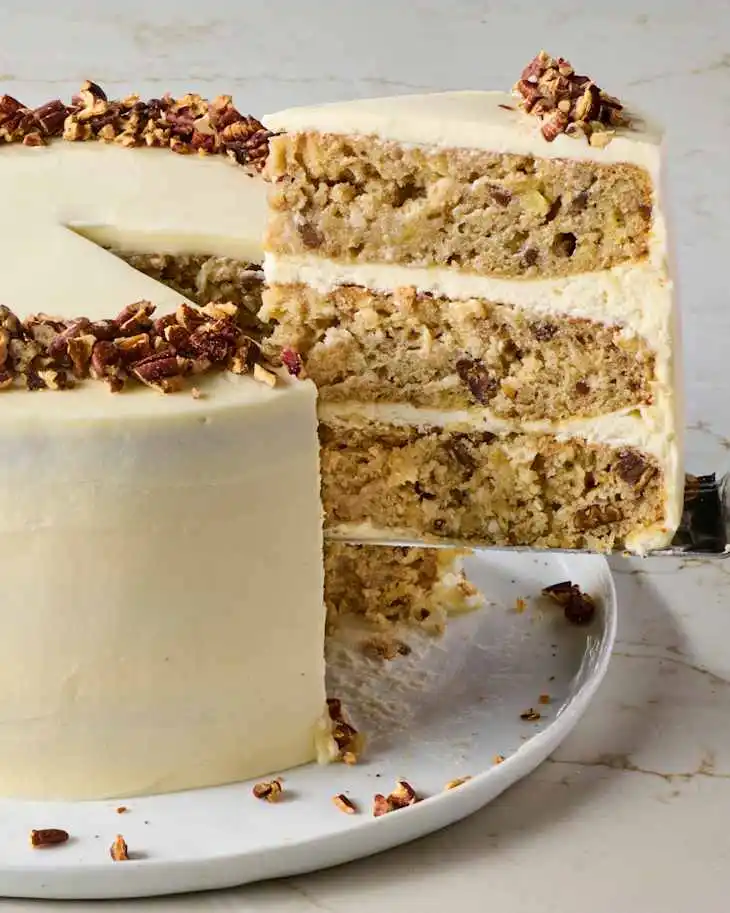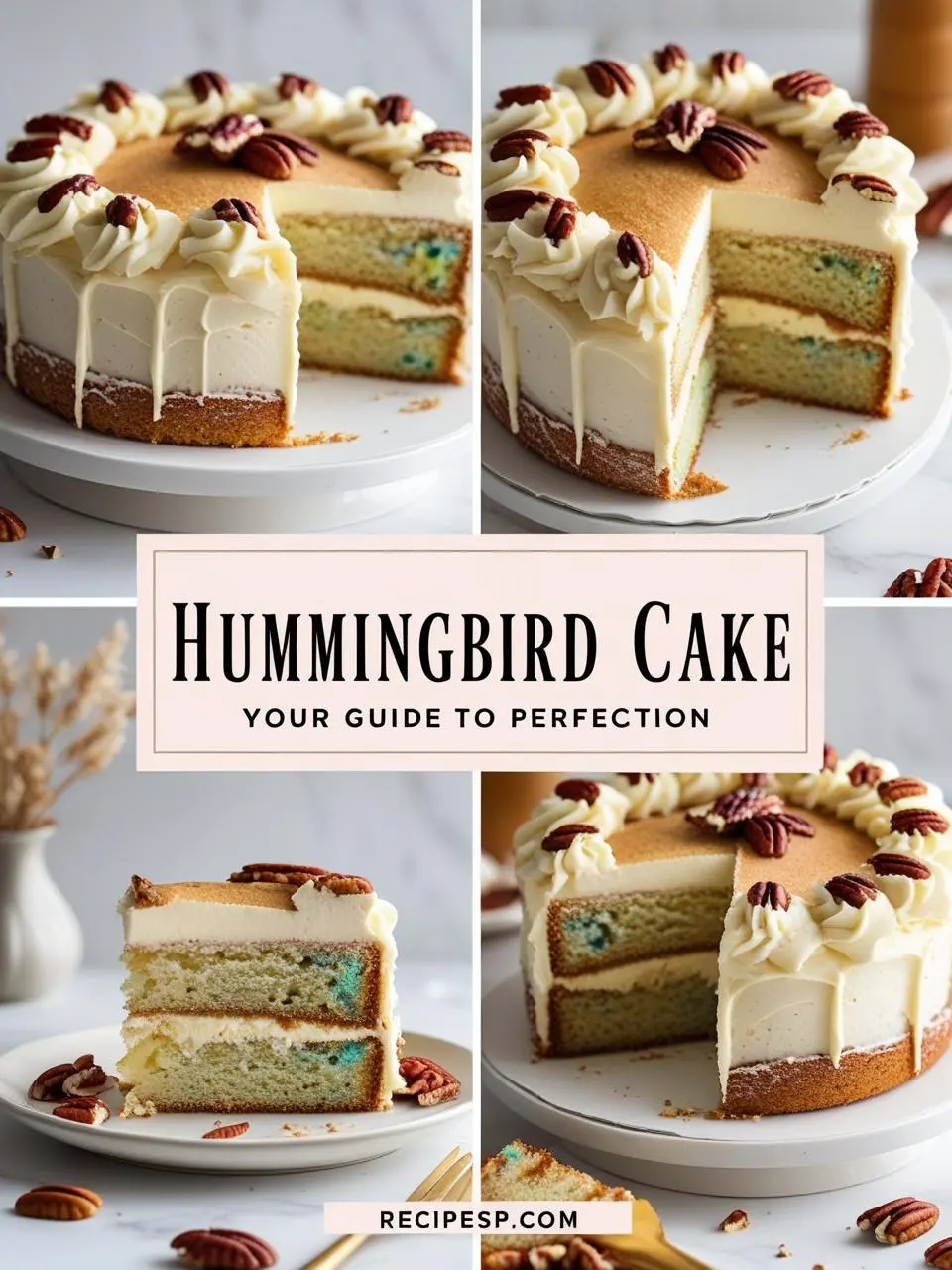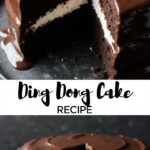Few Southern desserts carry the legacy and warmth of the hummingbird cake. Swirled with banana and pineapple, stitched together by a subtle spice, and crowned with a cloud of cream cheese frosting, this classic cake bridges nostalgia, hospitality, and vibrance in every bite.
Over the decades, hummingbird cake has become a signature for family celebrations, spring gatherings, and whenever a comforting, fruit-forward cake deserves to be the centerpiece. This story-rich confection has moved far beyond its roots, winning over new fans worldwide.
But what makes this cake so enchanting? Is it the surprise of pineapple, the generosity of cinnamon, or the nostalgic sweetness that takes you back to your grandmother’s kitchen?
Let’s uncover the characteristics, history, and secrets to creating an unforgettable hummingbird cake at home.
The Humble Beginnings
The origins of hummingbird cake trace back to Jamaica, where a similar banana-pineapple cake was shared under the name “doctor bird cake.” The “doctor bird,” native to the island, is a breed of hummingbird that inspired the name for this sweet treat. When the recipe journeyed to the Southern United States, it adapted to local tastes, most famously appearing in an issue of Southern Living magazine in 1978 — and became an instant classic.
Southern bakers quickly made this cake their own, making it a staple at community tables and holiday spreads. Today, it holds a place of affection alongside red velvet and coconut cake as an icon of Southern baking.
Key Elements of a Great Hummingbird Cake
Although recipes may vary, the time-tested foundations of a hummingbird cake are consistent:
- Banana: Provides moisture and subtle sweetness
- Crushed pineapple: Adds brightness and juicy texture
- Pecans: Offering contrasting crunch and a toasted note
- Warm spice: Usually cinnamon, infusing depth
- Oil-based batter: Assures tenderness and a forgiving crumb
- Cream cheese frosting: The rich, tangy finish that holds it all together
These ingredients combine for a cake that’s comforting yet surprisingly refreshing—never too dense, never too sweet.
A Closer Look at the Ingredients

It’s helpful to see the central ingredients side by side, along with their primary role:
| Ingredient | Function | Notes |
|---|---|---|
| Ripe bananas | Sweetener, moisture | Overripe is best |
| Crushed pineapple | Brightness, acidity, moisture | Drained, but not dry |
| All-purpose flour | Structure | Standard, no need for cake flour |
| Baking soda | Leavening | No baking powder required |
| Eggs | Binding, richness | Room temperature preferred |
| Sugar (granulated and/or brown) | Sweetener | Brown sugar increases depth, but optional |
| Cinnamon | Spice | Nutmeg, ginger: optional tweaks |
| Vegetable oil | Moisture, tender crumb | Neutral-flavored oil only |
| Pecans | Crunch, aroma | Toast lightly for best flavor |
| Vanilla extract | Aroma | Real, not imitation |
| Cream cheese, butter, and powdered sugar | Frosting | Adds tang, silkiness, and body |
Why Oil, Not Butter?
Cake made with oil, rather than butter, stays tender far longer after baking. Oil disperses evenly, giving a soft crumb without the need for creaming or extensive beating. It’s a bakery trick well suited to cakes with fruit, like hummingbird cake: the structure is delicate and won’t dry out from the moisture-rich fruit.
The Blissful Frosting
A hummingbird cake just wouldn’t be itself without a thick, velvet layer of cream cheese frosting. This frosting brings natural acidity, harmonizing with the sweet, lush flavors beneath it.
Here’s a cheat sheet for a classic frosting:
- 8 ounces cream cheese, softened
- ½ cup unsalted butter, softened
- 3 cups powdered sugar, sifted
- 1 teaspoon vanilla extract
- Pinch of salt
Beat the cream cheese and butter until fluffy, add sugar gradually, finish with vanilla and salt. For a lighter texture, whip an extra minute or two, adding milk a teaspoon at a time until you reach your desired consistency.
Crafting the Perfect Hummingbird Cake: Step-by-Step Recipe
Ingredients for the Cake
- 3 cups all-purpose flour
- 2 cups granulated sugar (or mix of white and brown)
- 1 teaspoon baking soda
- 1 teaspoon ground cinnamon
- ½ teaspoon salt
- 3 large eggs, room temperature
- 1 cup vegetable oil
- 2 teaspoons pure vanilla extract
- 1 (8-ounce) can crushed pineapple (do not drain completely)
- 2 cups very ripe mashed bananas (about 4)
- 1 cup chopped toasted pecans (reserve some for decorating, if desired)
Method
- Preheat your oven to 350°F (175°C). Grease and flour three 9-inch round cake pans, or line with parchment.
- Whisk dry ingredients: In a large bowl, combine flour, sugar, baking soda, cinnamon, and salt.
- Mix wet ingredients: In another bowl, whisk together eggs, oil, and vanilla. Stir in pineapple (with juice), mashed bananas, and pecans.
- Combine wet and dry: Add wet mixture to dry ingredients and stir gently until just combined. Overmixing toughens the cake.
- Pour into pans: Divide batter evenly between the pans and smooth tops.
- Bake for 23 to 28 minutes, or until a toothpick in the center comes out clean with a few moist crumbs.
- Cool cakes in pans for 10 minutes, then turn out onto wire racks and cool completely before frosting.
Assembling and Decorating
Careful assembly is the final touch that transforms simple layers into an irresistible dessert.
- Place the first cooled cake round on your platter.
- Spread a generous layer of cream cheese frosting.
- Repeat with remaining layers, finishing with frosting over the top and sides.
- Add reserved toasted pecans and a sprinkle of cinnamon for a picturesque touch.
If you prefer a “naked” look, swipe frosting between layers and lightly across the sides, allowing the cake to peek through.
Tips for Success
- Use very ripe bananas: Their sugars and flavor are crucial.
- Light touch on mixing: The more you stir, the tougher the cake.
- Toast the pecans: It’s a small step with big payoff.
- Cool completely: Frosting cakes while still warm leads to a melting mess.
- Get creative: Hummingbird cupcakes, sheet cakes, or even trifles work beautifully with this batter.
Common Variations Across Regions
While the Southern tradition is king, hummingbird cake welcomes regional updates and personal twists:
- Coconut: Some bakers add a handful of shredded coconut for tropical flair.
- Nut choices: Walnuts occasionally take the place of pecans.
- Spice: A touch of nutmeg or ginger can find its way into the batter.
- Decorating style: Some keep it rustic, others opt for intricate piping or candied pineapple.
Here’s a quick comparison of classic and modern takes:
| Classic Version | Modern Variations |
|---|---|
| No coconut | Added coconut |
| Only cinnamon | Mix of spices (nutmeg, ginger) |
| All-purpose flour | Gluten-free flour blends |
| Layer cake format | Cupcakes, sheet cakes, trifles |
| Cream cheese frosting | Flavored frostings (coconut, citrus zest) |
The Cake for Gatherings
There’s an open-hearted spirit baked into every hummingbird cake. Perhaps that’s why the recipe is passed through generations, scribbled in family cookbooks, and often pulled out for the most celebratory occasions. The scent alone, with banana, pineapple, and cinnamon weaving through a home, seems to invite people closer.
For those seeking a cake that’s cozy but never dull, nostalgic yet with room for improvisation, hummingbird cake delivers each time. Whether shared at a birthday, potluck, or saved for a quiet afternoon, it stands ready with layers of tropical charm and timeless comfort.
If you’re looking for a project that’s forgiving, flavorsome, and irresistibly moist, this classic deserves a coveted place in your baking repertoire. Once you taste it, you’ll understand why it reigns as a beloved favorite for so many.
FAQ: Mastering the Art of Hummingbird Cake
As you embark on the journey to create this luscious cake, a few common questions may arise. Below, you’ll find concise answers to help you tackle this delightful baking adventure with confidence and flair.
What makes a hummingbird cake special?
Its combination of bananas, pineapple, and spices, coupled with cream cheese frosting, creates a uniquely moist and flavorful treat.
Can I substitute any of the ingredients?
Yes, walnuts can replace pecans, and gluten-free flour blends can be used instead of all-purpose flour.
Why is oil used instead of butter?
Oil ensures a tender, moist crumb that complements the cake’s fruit base without the need for creaming.
How should I store the cake?
Store the cake in an airtight container in the refrigerator for up to five days.



